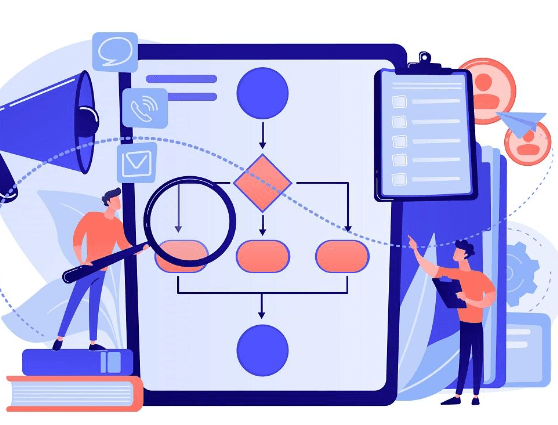The Role of Business Rules Engines in Real-Time Decision-Making for Insurance

Defining Business Rules Engines in Insurance
A Business Rules Engine (BRE) is essentially a digital brain for organizations, designed to streamline and automate complex decision-making. This technology is particularly impactful in the insurance sector, where it processes intricate rules and variables in real time, enabling seamless automation of traditionally manual workflows. Insurance companies facing heightened competition and customer demands for speed can benefit greatly; a BRE can evaluate policy applications within seconds, instantly analyze risk, and apply underwriting guidelines, ensuring a quick, consistent response.
BREs comprise several interrelated components that form a robust framework:
- Rule Repository: Houses the company’s business rules, policies, and regulatory standards.
- Execution Engine: Processes and applies decision rules rapidly.
- Integration Layers: Connect seamlessly to existing systems and data sources.
- Real-Time Analytics: Provide instant insights into decision outcomes, facilitating ongoing improvement.
The Shift to Real-Time Processing in Insurance
Traditionally, insurance workflows have been burdened by lengthy processing times and bureaucratic delays. BREs introduce real-time decision-making, which addresses these inefficiencies by eliminating bottlenecks and expediting operations. For example, auto insurance applications that once required extensive manual review can now be assessed instantly with a BRE. Driver history, geographic risk, credit scores, and claims history are all analyzed on the spot, providing customers with real-time quotes and speeding up the sales process.
In addition to faster underwriting, real-time decisioning enables dynamic pricing models. Premiums can adjust immediately based on market conditions, updated risk profiles, and customer behavior, which creates a competitive edge in adapting to changing circumstances.
See also: SEO in Sydney: The Marketing Strategy Every Business Needs to Implement Now
Core Architecture for Insurance-Specific BREs
The effectiveness of a BRE in insurance depends on its underlying technical architecture. Key components of a successful BRE include:
- Central Rule Repository: The core that houses all business rules.
- Execution Engine: Executes decisions within milliseconds.
- Decision Tables: Simplify complex decisions, guiding the system to accurate outcomes.
- API Gateways: Enable integration with existing policy, claims, and CRM systems.
- Analytics and Version Control: Track performance and ensure consistent rule applications.
This architecture allows the BRE to integrate with policy management, claims handling, and CRM tools, supporting seamless data flow and accurate decision-making across platforms. High-performing systems can process thousands of decisions per second, with nearly zero downtime and minimal response lag.
Practical Applications of BREs in Insurance
- Data-Driven Analysis: With data flowing in from various sources, BREs facilitate fast, data-driven insights. Predictive analytics inform underwriting, pricing, and claims processes, using patterns from historical and real-time data. Social media, IoT data, and economic indicators all enrich risk assessment models, improving precision and response time.
- Underwriting Automation: By automating underwriting tasks, a BRE enables insurers to assess risks quickly. Rules engines apply predefined criteria, analyze historical data, and integrate compliance standards, minimizing manual effort and focusing underwriters on high-value cases.
- Pricing and Risk Adjustment: Dynamic pricing based on data analysis allows insurers to adjust premiums on demand. This approach is ideal for markets such as gig economy insurance, where policies may fluctuate with real-time risk factors.
- Claims Processing: Claims management benefits significantly from BREs, as they automate eligibility checks, detect fraud, and ensure accurate payment calculations. By reducing manual review times, insurers accelerate claims processing and enhance customer satisfaction.
- Policy Administration and Customer Relationship Management: With BREs, policy adjustments, renewals, and premium recalculations can be handled in real time, improving responsiveness and customer service quality. BREs streamline CRM functions by providing instant premium calculations and prompt claims resolutions, essential for retaining policyholders.
Implementation Roadmap for BRE Deployment
For insurers considering BRE deployment, a phased approach is recommended:
- Foundation Building: Map decision points, document rules, select technology, and define KPIs.
- Development and Integration: Align rules with business processes, test integrations, and validate decision paths.
- Launch and Scale: Monitor metrics, adjust rules as needed, train users, and expand successful applications organization-wide.
Conclusion
A Business Rules Engine is invaluable for modern insurers aiming to enhance decision-making speed, cut costs, and improve customer service. By empowering both business and technical teams to manage and adjust rules, a BRE accelerates time-to-market for new products and changes, positioning insurers to stay agile in a competitive market. With seamless integration capabilities, such engines enable real-time responses that meet today’s customer expectations while providing a robust foundation for future growth.





